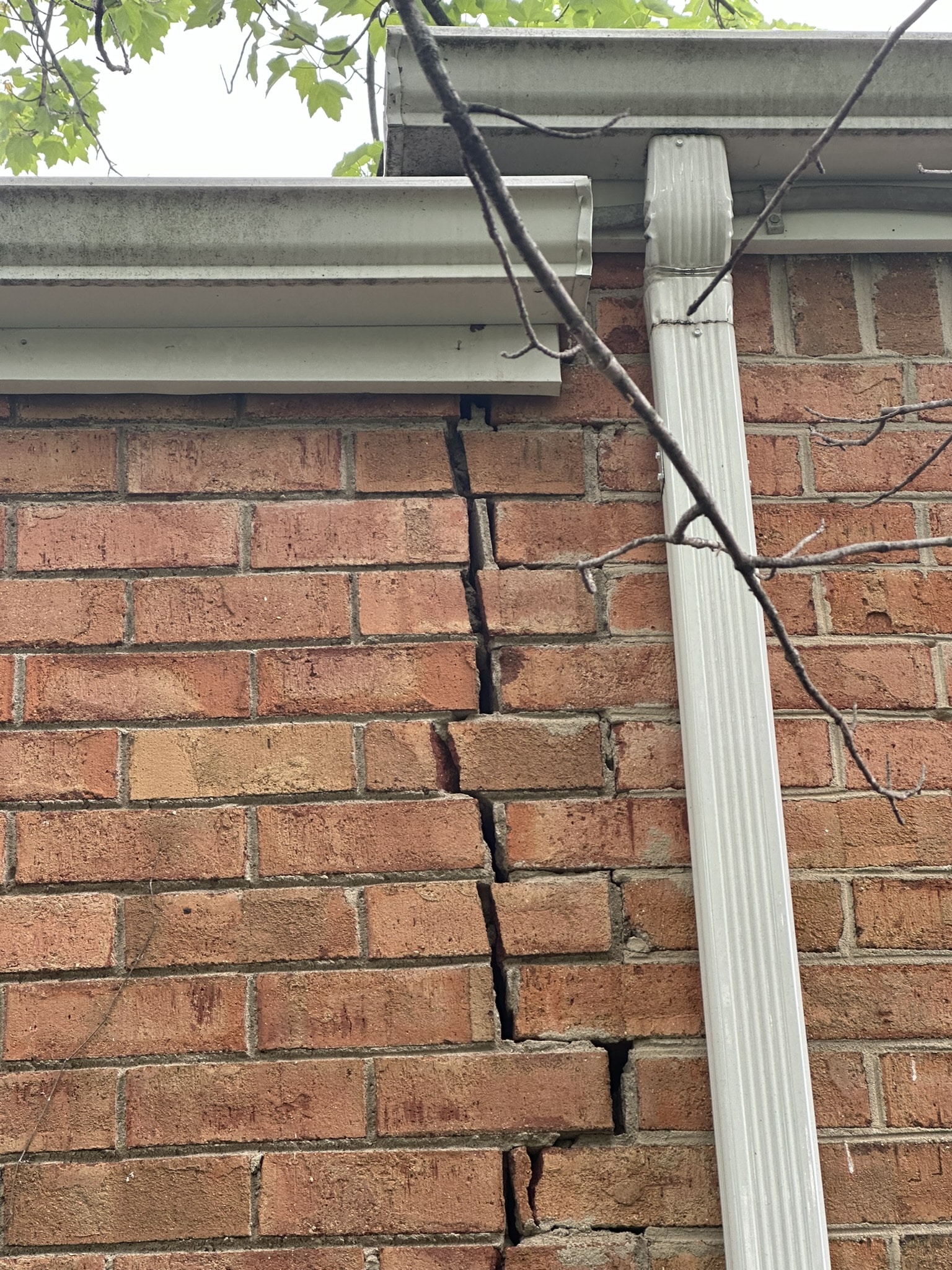
When it comes to foundation issues, water is often the hidden force behind the damage. While you might expect dramatic events like floods or earthquakes to cause shifting and cracking, the slow, persistent pressure from water-saturated soil can be just as devastating. Left unchecked, excess moisture around your home’s foundation can lead to soil movement, foundation shifting, and costly structural repairs.
Understanding how water impacts your foundation—and what you can do to prevent it—is critical to protecting your home for the long haul. In this article, we’ll break down the science behind water-related foundation movement, the telltale signs of trouble, and the expert solutions that prevent shifting before it starts.
🔑 Key Takeaways
- Water accumulation around your home leads to soil expansion, erosion, and foundation shifting.
- Common sources include poor drainage, gutter overflow, landscaping mistakes, and plumbing leaks.
- Signs of shifting include cracks, sloping floors, and separation between walls and ceilings.
- Professional solutions include waterproofing, proper grading, French drains, and sump pump systems.
- Proactive water management protects your foundation’s long-term stability and value.
The Hidden Impact of Water on Foundation Soil
Your foundation doesn’t rest on solid rock—it rests on soil. And that soil changes in volume, density, and strength based on how much moisture it holds.
What Happens When Soil Gets Wet?
| Soil Type | Behavior When Wet | Impact on Foundation |
|---|---|---|
| Clay | Expands dramatically | Exerts lateral pressure on walls |
| Sand | Washes away easily | Causes voids and loss of support |
| Silt | Compacts when saturated | Increases settlement risk |
| Peat | Compressible and unstable | Can lead to excessive sinking |
When water saturates the soil around your foundation:
- The volume of the soil increases, exerting lateral pressure on basement walls.
- Erosion removes support beneath the footings, causing uneven settlement.
- Hydrostatic pressure pushes water into tiny cracks, worsening them over time.
Over time, this pressure leads to foundation movement—either inward (wall bowing) or downward (settlement).
What Causes Water Accumulation Near Your Foundation?
It’s not always a torrential downpour that causes damage. Often, it’s small and persistent sources of moisture that create big problems over time.
Most Common Culprits
- Poor Grading
- If the soil around your home slopes toward the foundation instead of away from it, rainwater pools against the walls.
- Gutter and Downspout Failures
- Overflowing gutters and downspouts that discharge too close to the foundation allow water to soak into the surrounding soil.
- Clogged or Broken Drains
- If your yard drains or basement drains are blocked, water has nowhere to go but down—toward the foundation.
- Overwatering Landscaping
- Excessive irrigation near the house can overload the soil and contribute to hydrostatic pressure.
- Leaking Plumbing
- Broken pipes, especially under the slab or in the crawlspace, can silently saturate the soil for weeks before discovery.
- Heavy Snowmelt
- In colder regions, melting snow without proper drainage can overwhelm the foundation during the spring thaw.
Signs Your Foundation Is Shifting Due to Water
Recognizing the early indicators of water-induced foundation shifting can help you take action before the damage escalates.
What to Watch For
| Sign | What It May Indicate |
|---|---|
| Cracks in Basement Walls | Pressure from soil expansion or movement |
| Uneven Floors or Sloping | Foundation settling or voids beneath slab |
| Doors and Windows Sticking | Structural shifts causing frame distortion |
| Water Seepage or Damp Walls | Soil saturation and hydrostatic pressure |
| Cracks in Exterior Brick | Foundation movement or shifting corners |
| Gaps Between Walls and Ceilings | Settlement pulling structure downward |
These signs are not cosmetic—they are structural red flags. If you notice more than one occurring at the same time, it’s a strong indication that water is affecting your foundation.
Real Case: Foundation Shift Prevented in Time
In Botetourt County, VA, a homeowner began noticing small cracks forming in her basement wall and water collecting after each storm. A quick call to Seal-Tite revealed that poor grading and overloaded downspouts were sending thousands of gallons of rainwater toward the foundation each year.
The solution included:
- Installing a full-perimeter French drain system
- Extending downspouts away from the house
- Waterproofing the basement interior
- Reinforcing the walls with carbon fiber straps
Not only was the foundation stabilized, but future pressure and shifting were prevented—saving the homeowner thousands in potential repairs.
How to Prevent Water-Related Foundation Shifting
Prevention is your best line of defense. Fortunately, there are proven strategies that significantly reduce the risk of water damage and soil movement.
1. Improve Grading Around Your Home
Ensure the ground slopes at least 6 inches downward for the first 10 feet away from your foundation. This encourages water to flow away from, not toward, your home.
2. Extend Downspouts and Maintain Gutters
Gutters should be clean and downspouts should discharge water at least 10 feet away using extenders or underground piping.
3. Install a French Drain System
A French drain is a trench filled with gravel and a perforated pipe that redirects water away from the foundation. It’s especially useful for homes with persistent water pooling or surface runoff issues.
4. Use Sump Pumps in Vulnerable Basements
Sump pumps collect and remove water from below the basement floor, protecting your foundation from water buildup. Adding a battery backup ensures protection during power outages.
5. Seal Cracks and Waterproof Walls
Interior waterproofing with epoxy injections or sealants helps block water intrusion. Exterior waterproof membranes provide even greater defense but require excavation.
6. Maintain Landscaping Responsibly
Avoid planting water-hungry trees or shrubs near your foundation. Use native plants and mulch to improve drainage and reduce erosion.
Expert Solutions for Shifting Foundations
If your home is already experiencing foundation movement due to water, there are engineered solutions that can restore stability.
Repair Options
| Method | Used For | Benefits |
|---|---|---|
| Helical Piers | Settled foundations | Transfers weight to stable soil |
| Wall Anchors | Bowing walls from soil pressure | Pulls wall back and prevents movement |
| Carbon Fiber Straps | Early-stage wall movement | Strengthens and stabilizes walls |
| Slabjacking | Sinking concrete floors | Lifts sunken slabs back into place |
These solutions are designed to address the underlying cause—soil instability and water pressure—while reinforcing the foundation.
FAQs: Water and Foundation Shifting
Can heavy rain alone cause foundation problems?
Yes. Consistent rainfall without proper drainage can saturate the soil, increasing hydrostatic pressure and causing foundation movement.
Is mold a sign of water around the foundation?
Absolutely. Moisture entering through foundation cracks can lead to mold, indicating a water management issue that could affect structural stability.
How long does it take for water to damage a foundation?
It depends on the soil type and drainage. Damage can begin within months if saturation persists. Expansive soils like clay respond rapidly to water changes.
Will waterproofing alone stop foundation shifting?
Waterproofing helps but won’t reverse existing damage. It’s most effective when combined with drainage improvements and, if necessary, structural repairs.
Are these repairs covered by homeowners insurance?
Typically, insurance does not cover foundation damage caused by drainage or soil conditions. It’s best to review your policy or consult your provider.
Conclusion: Protect Your Foundation from the Ground Up
Water may seem harmless—but when it saturates the soil around your home, it becomes one of the biggest threats to your foundation’s stability. From lateral pressure on basement walls to erosion beneath footings, uncontrolled moisture can cause cracks, shifting, and settlement that compromise your home’s structural integrity.
The good news? With proactive water management and expert repair solutions, you can prevent most water-related foundation problems. Whether it’s redirecting runoff with a French drain, reinforcing walls with carbon fiber, or waterproofing vulnerable areas, the key is early intervention.
If you’ve noticed signs of shifting—or simply want to safeguard your home—Seal-Tite Basement Waterproofing is here to help. Our team of foundation and drainage specialists can assess your home, recommend targeted solutions, and give you the peace of mind that comes with a dry, stable foundation.
Don’t wait for water to do the damage. Act today, and build on a foundation you can trust.

Seal-tite Basement Waterproofing Co. is a full service basement environment contractor. We carry an A+ Better Business Bureau rating. We repaired over 40,000 homes and structures in Virginia, West Virginia, Tennessee, and North Carolina. We are fully insured and licensed. We have worked in all types of locations, including residential and commercial locations, government agencies, colleges, hospitals, churches, and condo associations.
Seal-tite® offers a lifetime transferable warranty. We carry a Class A Contractor’s License and we are fully insured. Our satisfied customers range from government agencies to businesses, hospitals, colleges, churches, and thousands of homeowners. Your home is probably the single largest investment you will make in your lifetime. Don’t wait, call Seal-tite® to help make your home dry, safe and livable.

